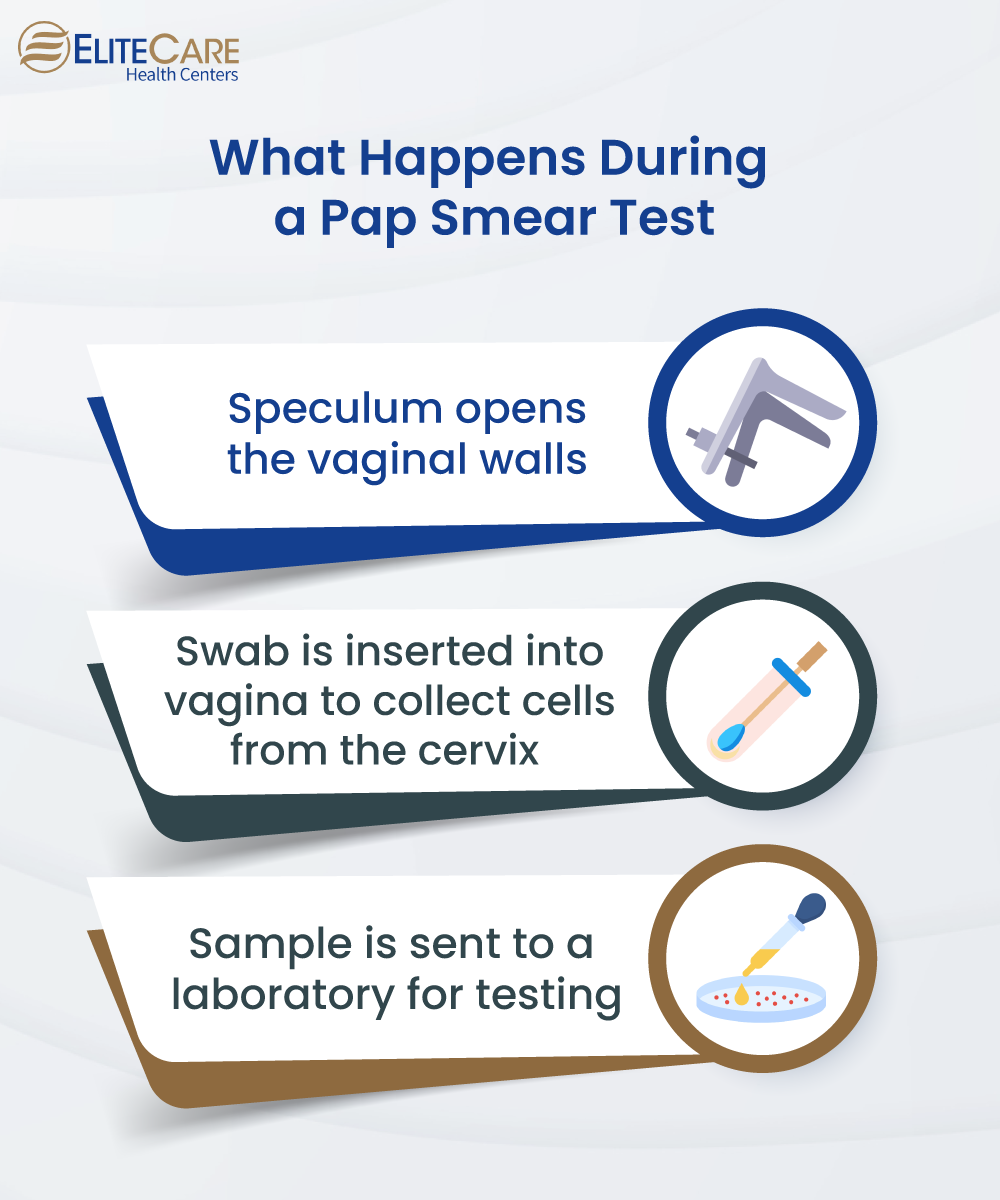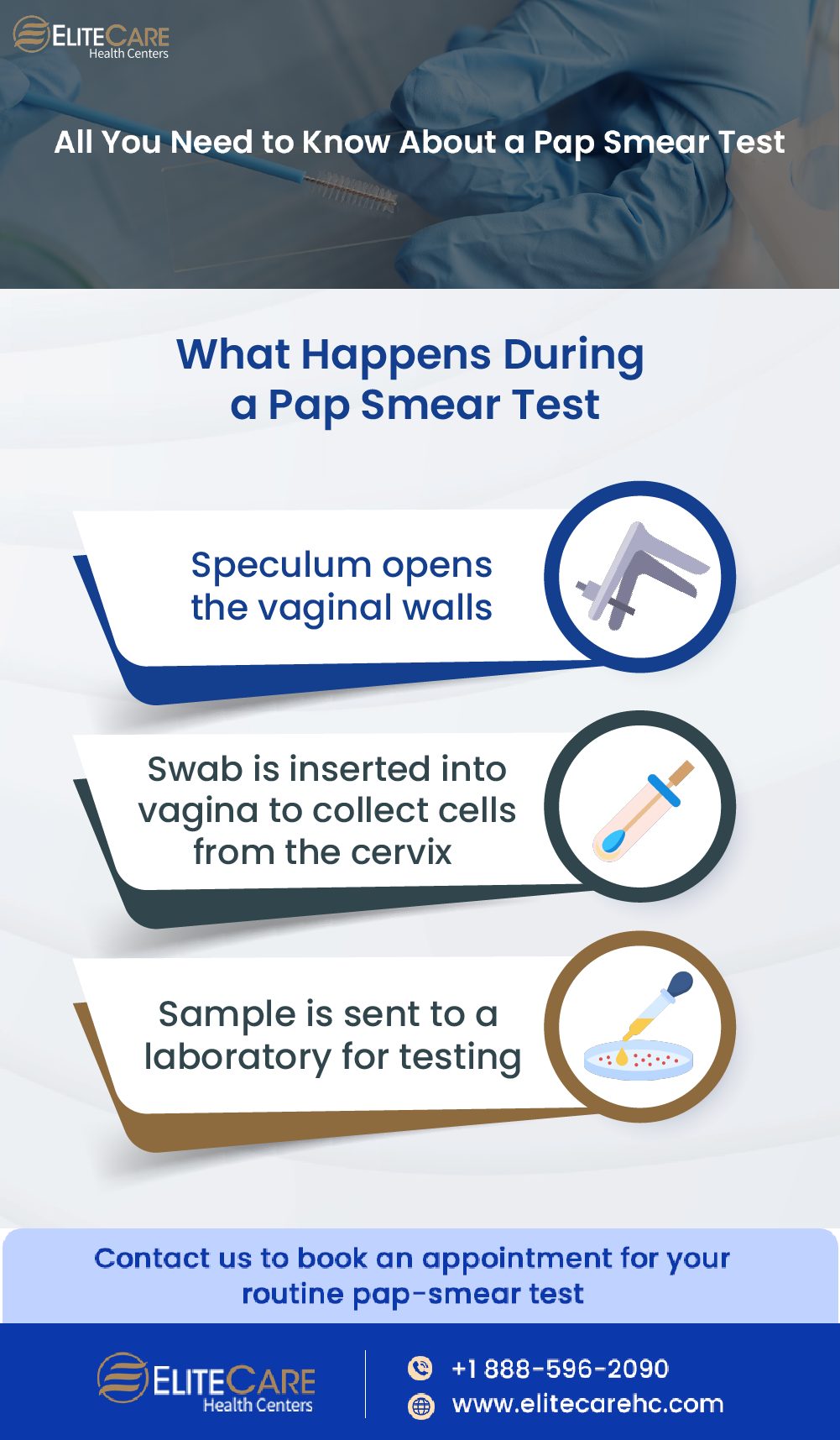
A Pap smear test, also known as a Pap test, is a screening test that helps detect any changes in the cervix or the lower part of the uterus that opens into the vagina. Every year, approximately 13,000 new cases of cervical cancer are diagnosed in the United States*. However, cervical cancer is known to be a preventable and treatable disease if caught early. The Pap smear is a simple and effective diagnostic tool that can help detect abnormal cells before they become cancerous.
When is a Pap Smear Required?
Several factors, including a woman’s age, health history, results of previous pap smears, etc., decide the frequency of your recommended Pap smear.
Doctors recommend that women aged 21 to 65 get a Pap smear every 3 years. Women over 30 may opt for a combination of a Pap smear and human papillomavirus (HPV) test every 5 years as an extra precautionary measure. Those who have undergone a total hysterectomy i.e., removal of the uterus and cervix for reasons not related to cervical cancer or precancer do not require screening. It is wise to discuss individual screening needs with a healthcare provider.
Read More: Top 10 screenings for Women
What Happens During the Pap Smear Test
There are a few things that one needs to keep in mind before going for a Pap smear test. Refrain from having sexual contact or using tampons 24 hours before the test. Also, wear comfortable, loose-fitting clothing to the appointment.

Here’s a step-by-step guide to know what to expect from the test:
- During the test, you’ll lie on your backs on an exam table with your feet in stirrups.
- The healthcare provider will gently insert a speculum into the vagina to hold it open.
- The provider will then use a small brush or spatula to collect cells from the cervix.
- The collected cells will be placed on a slide and sent to a laboratory for examination.
- Results will typically be available within 1-2 weeks and can be discussed with the healthcare provider.
A Pap smear is a quick and relatively painless procedure that can be performed during a routine gynecological exam. It is usually described as an uncomfortable but not painful process. Relax and take deep breaths during the test to help make it as comfortable as possible.
Possible Results of a Pap Smear
After the Pap smear, individuals can return to their normal activities immediately. There may be some mild cramping or discomfort, but this typically subsides quickly. Pap smear test results can be one of the following:
Normal result
It means that the cervical cells appear normal and healthy, and there are no signs of cervical cancer or precancerous changes that require immediate medical attention.
Abnormal result
A positive Pap smear test result indicates that the cervical cells appear different, and further testing may be necessary. An abnormal result does not necessarily confirm the presence of cancer. It could be due to several reasons such as inflammation, yeast or bacterial infections, or precancerous changes in the cervix.
In the case of an abnormal Pap smear result, the healthcare provider will advise on the next steps, which may include additional testing or treatment. It may include a follow-up Pap smear, or a colposcopy i.e., an examination of the cervix using a magnifying device. In some cases, they can also recommend a biopsy where they collect a small tissue sample for examination.
Are There Any Risks Associated with a Pap Smear Test?
It is a relatively safe test, but like any medical procedure, there are some minor risks associated with it which are as follows:
- Some women may experience mild cramping or discomfort during the test which is usually described as uncomfortable but not painful.
- In some cases, the Pap smear can cause light bleeding or spotting.
- There is a small risk of infection associated with the test which is easily treatable with antibiotics.
- In rare cases, a Pap smear can produce a false positive or negative result.
It is crucial to talk to a healthcare provider about any concerns or questions about the risks associated with a Pap smear. They can help in understanding the process and help one make an informed decision.
Conclusion
The widespread use of the Pap smear test has been a major reason for the decline in cervical cancer deaths. This screening allows for the detection and treatment of any minor issues or precancerous changes before they progress to invasive cancer. Consult a primary care physician to get detailed information about cervical cancer and the importance of a Pap smear test. For any queries or concerns related to cervical cancer, contact the best medical clinic and schedule an appointment with our providers.
*Follow this link for the data provided by the Centers for Disease Control and Prevention






